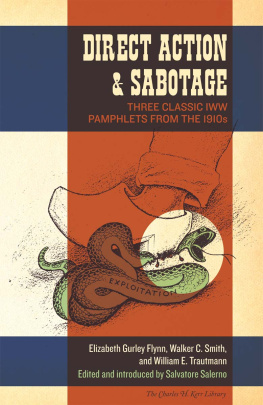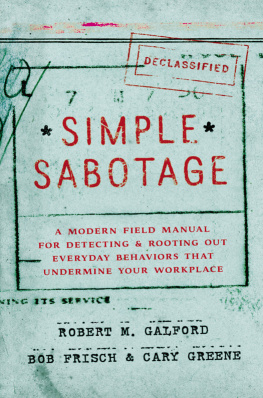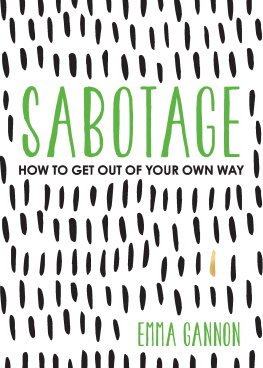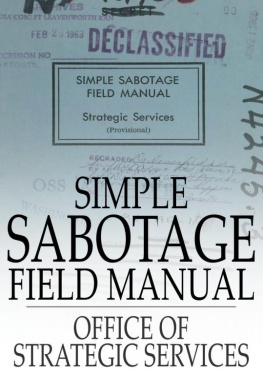
A NOTE ON THE ILLUSTRATIONS
All the illustrations in this book appeared originally in the Industrial Worker or other official IWW publications. However, only those on the covers of the three pamphlets reprinted here actually appeared in those pamphlets.
Direct Action & Sabotage: Three Classic IWW Pamphlets from the 1910s Elizabeth Gurley Flynn, Walker C. Smith, and William E. Trautmann Edited by Salvatore Salerno
PM Press 2014
All rights reserved. No part of this book may be transmitted by any means without permission in writing from the publisher
PM Press
PO Box 23912
Oakland, CA 94623
www.pmpress.org
Published in conjunction with the Charles H. Kerr Publishing Company
C.H. Kerr Company
1726 Jarvis Avenue
Chicago, IL 60626
www.charleshkerr.com
Cover design by Josh MacPhee
Layout by Jonathan Rowland
ISBN: 978-1-60486-482-3
Library of Congress Control Number: 2013911525
10 9 8 7 6 5 4 3 2 1
Printed in the USA by the Employee Owners of Thomson-Shore in Dexter, Michigan.
www.thomsonshore.com
CONTENTS
Salvatore Salerno
William E. Trautmann
Walker C. Smith
Elizabeth Gurley Flynn


The IWW welcomed the Wildcat Strikes and
Sitdowns of the 1930s as the offspring of the Wobbly
Black Cat of Direct Action and Sabotage.
Direct Action & Sabotage!
Is the machine more than its makers?
Sabotage says No!
Is the product greater than producers?
Sabotage says No!
Sabotage places human lifeand especially the life of the only useful classhigher than all else in the universe.
For sabotage or for slavery?
Which?
Walker C. Smith
The Rebels Toast
If Freedoms road seems rough and hard,
And strewn with rocks and thorns,
Then put your wooden shoes on, pard,
And you wont hurt your corns.
To organize and teach, no doubt,
Is very good, thats true,
But still we cant succeed without
The Good Old Wooden Shoe.
Joe Hill
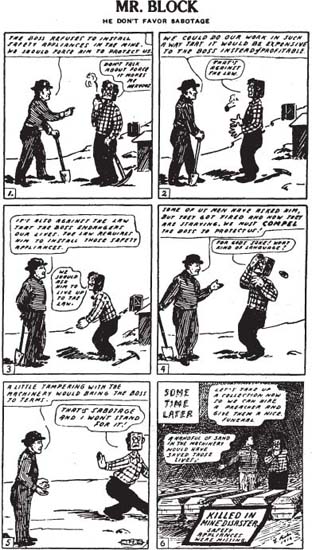
Cartoon by Ernest Riebe
Introduction
T HE I NDUSTRIAL W ORKERS OF THE W ORLD (IWW), FOUND ed in 1905, distinguished itself from other revolutionary workers organizations by its emphasis on working-class solidarity and classwide collective action as the means of social transformation. The IWW was not, strictly speaking, pacifist in outlook, but its spokespersons and literature consistently opposed those Marxists and anarchists who proposed armed struggle, seizure of state power, or other forms of organized or individual violence as the road to revolution in the U.S. Historian Staughton Lynd was thus fully justified in featuring the IWW prominently in his anthology on Nonviolence in America.
As the pamphlets reproduced in this volume attest, the IWW notions of direct action and sabotage are also firmly within the framework of nonviolence, for they have absolutely nothing to do with any form of life-threatening terrorism or personal injury.
The pamphlets reprinted here were first published in the 1910s, amidst great controversy and division within the left regarding the value of these tactics. Even then, the tactics of direct action and sabotage were often associated with the cartoonists image of the disheveled, wild-eyed anarchist armed with stiletto, handgun or bombthe clandestine activity of a militant minority or the desperate acts of the unorganized. The mainstream, trade-union and left press of the period all shared in creating and perpetuating this false and stereotyped image which associated the wanton destruction of property and human life with the practices of sabotage and direct action. The activist authors of the texts in this collection challenged the prevailing stereotype and redefined the parameters of the debate. As they point out, the practice of direct action, and of sabotage, are as old as class society itself, and have been an integral part of the everyday work life of wage-earners in all times and places. To the IWW belongs the distinction of being the first workers organization in the U.S. to discuss these common practices openly, and to recognize their place in working-class struggle. Viewing direct action and sabotage in the spirit of creative nonviolence, Wobblies readily integrated these tactics into their struggle to build industrial unions.
Notes on the History of Direct Action and Sabotage
All who have written on the subject of direct action and sabotage remind us of the ancient origins of these tactics. Pamphleteers and soapboxers who advocated such resistance, in their street corner speeches and writings, claimed that direct action and sabotage were as old as exploitation and had long been part of labors arsenal. As forms of resistance and struggle, direct action and sabotage emerged in opposition to the myriad social injustices of civil society, imperialist conquest and industrial development. Direct action and sabotage range from individual acts of rebellion and resistance or action on the part of small groups, to larger patterns of action within the context of a culture of struggle. As forms of struggle and resistance they were often hidden and anonymous, their origin and history shrouded by mystery, preserved in oral tradition and iconography, named or made visible after the fact. The history of these tactics often reveals a tension between nonviolent direct action and quasi-insurrectionary activity, a tension that continues to be debated among activists today.
These examples establish the ancient ancestry of direct action. Other early examples include social banditry, peasant uprisings and the struggle of Africans against new world slavery. Enslaved Africans carried out revolts at the point of embarkation, during the middle passage, and at the shore warehouse. In the United States they created an illegal, grapevine system of communication capable, it was said, of running several hundred miles in a fortnight. The underground served insurrectionary activity and aided runaways. On the plantation enslaved Africans fought to set their own tempo and rhythm of work. Frederick Douglass writes:
There is much rivalry among slaves, at times, as to which can do the most work, and masters generally seek to promote such rivalry. But some of them were too wise to race with each other very long. Such racing, we had the sagacity to see, was not likely to pay. We had our times for measuring each others strength, but we knew too much to keep up the competition so long as to produce an extraordinary days work. We knew that if, by extraordinary exertion, a large quantity of work was done in one day, the fact, becoming known to the master, might lead him to require the same amount every day. This thought was enough to bring us to a dead halt when ever so much excited for the race.
Little is known about black workplace sabotage, and even less about its relationship to working-class resistance. Robin D.G. Kelley writes in Race Rebels:
Peasants struggling against landlords and other minions of the state burned property deeds and debt notes, and expropriated tax holdings. In industrializing cities throughout Europe increases in bread prices, the introduction of new machinery and enclosures were met with resistance. Sustained illegal action or quasi-insurrectionary activity such as Luddism also emerged. Some forms of quasi-insurrectionary activity were deliberate, others spontaneous. E.P. Thompson writes that spontaneous direct action rooted in local working-class culture was
Next page
